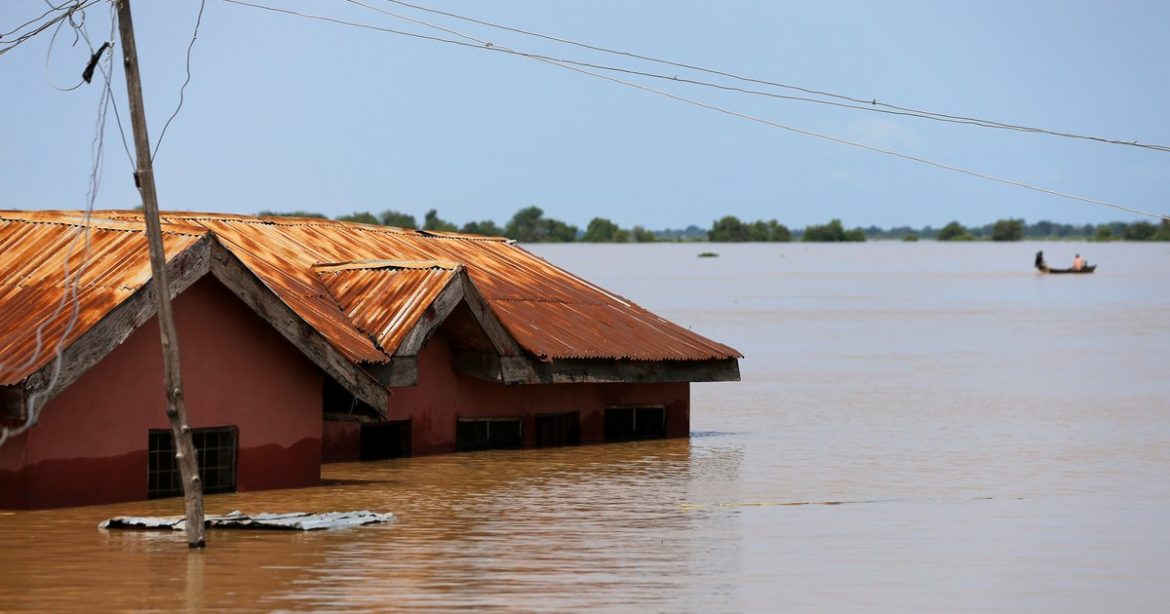561
By Daniel Adaji
Despite the Nigerian government’s spending of over N29bn on flood control and related projects within nine months, devastating water surges remain a nightmare in many parts of the country.
Records obtained by Pointblanknews.com from BudgIT’s accountability platform, GovSpend, reveal massive allocations to various agencies and contractors between January and December 2024.
The document details an extensive list of projects aimed at mitigating the effects of flooding, improving drainage systems, and enhancing environmental resilience.
Yet, despite the volume of expenditure, flooding continues to wreak havoc across the country, destroying lives, farmlands, and critical infrastructure, an all-too-familiar pattern that has remained unchanged over the years.
In recent floods in Mokwa, Niger State, no fewer than 3,018 people have been displaced, and 265 houses destroyed. Over 150 lives, including those of children, were lost, according to data from the Niger State Emergency Management Agency (NSEMA).
Floods have consistently caught Nigerian authorities unaware, despite the billions spent on control and management. This recurring failure has raised doubts about the genuity and effectiveness of these projects.
In October 2022, the Ministry of Humanitarian Affairs reported that “over 1.4 million persons were displaced, about 500 persons were reported dead, and 1,546 persons injured” due to flooding.
“Similarly, 45,249 houses were totally damaged, while 70,566 hectares of farmlands were completely destroyed,” said the ministry’s Deputy Director of Information, Rhoda Iliya.
In a similar tragedy in 2012, reports indicate that 363 people died and more than 2.1 million were displaced due to severe floods.
These disasters only add to Nigeria’s worsening challenges, including insecurity, rising food inflation, and widespread hunger.
Niger State, one of Nigeria’s key food-producing regions—known for yams, sesame, and other staples—is particularly vulnerable. With food inflation hitting 40.87 per cent as of June 2024 (though the government’s recent rebase brings it down to 21 per cent), continued flooding threatens to push the figure even higher.
The Nigerian government, known for its inadequate forecasting, has repeatedly failed to take proactive measures to avert disasters. This lack of political will has endangered countless lives, resulting in avoidable deaths and widespread destruction of property.
In 2024, the National Emergency Management Agency (NEMA) reported that floods killed 179 persons in 15 states and displaced 208,655 others in 22 states. The agency also noted that 107,652 hectares of farmland and 80,049 houses were destroyed.
Benue and Niger states topped the list of the most affected.
Although the government claims it is working to curb the devastating effects of flooding, Nigerians are still waiting to see those promises translated into action.
According to Dr. Umar Mohammed, Director General of the Nigeria Hydrological Services Agency (NIHSA), the agency is actively collaborating with others:
“We have, since inception, been working closely with NIMET. We share data and collaborate in producing flood forecasts and seasonal outlooks,” he said.
At a recent meeting with heads of agencies, the Secretary to the Government of the Federation, Sen. George Akume, represented by the Permanent Secretary, General Services Office, Dr. Nnamdi Mberi, stated, “This administration is particular about addressing flooding and related issues like desertification. The President is resolute in implementing effective measures to curtail the menace.”
Among the beneficiaries listed in the dataset is Richflood International Limited, which received multiple payments totaling over N60m from the Project Development Institute, Enugu, for consultancy services on flood risk analysis and mitigation studies across Nigeria’s six geopolitical zones.
Another major recipient, Geoflux Technical Services Ltd, was paid nearly N650m for the construction of drainage and erosion control structures in communities across Abia and Imo states.
Uniglobe Sourcing & Logistics Ltd received over N1.2bn for the procurement and distribution of flood relief materials, including water purification kits, inflatable boats, and emergency shelter units, while Salmok Ventures Ltd was paid close to N480 million for the “rehabilitation of flood-prone roads and culverts” in Niger and Kogi states.
However, the reality for residents in Lokoja is that the roads are still submerged each time the River Niger overflows, cutting off access for days.
Even NIHSA made significant payments for flood modeling and the development of early warning systems. Technohydro Consult Ltd, which received over N350 million, was contracted to upgrade flood alert infrastructure.
As another rainy season begins, Nigerians brace for yet another cycle of destruction. Communities along the Benue and Niger rivers are once again left to build makeshift barriers and prepare for evacuation with little faith in the promises made through multi-billion-naira government contracts.
The question on many citizens’ minds remains: Where did all the money go?



